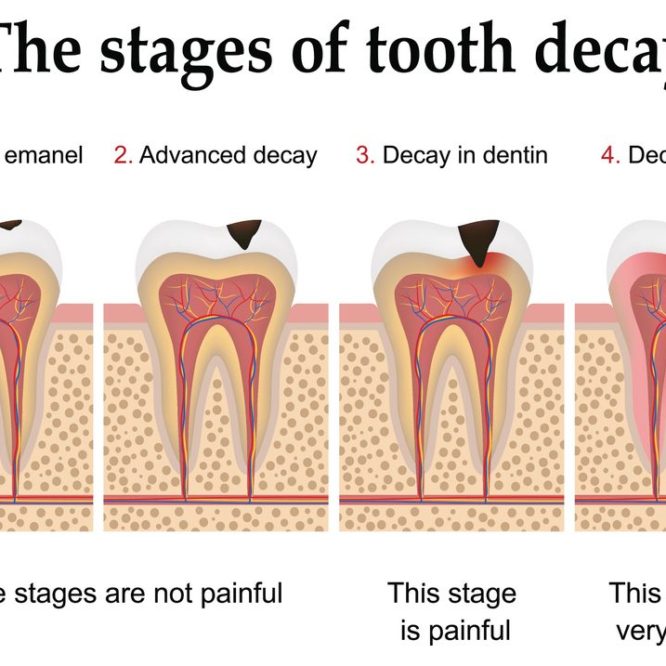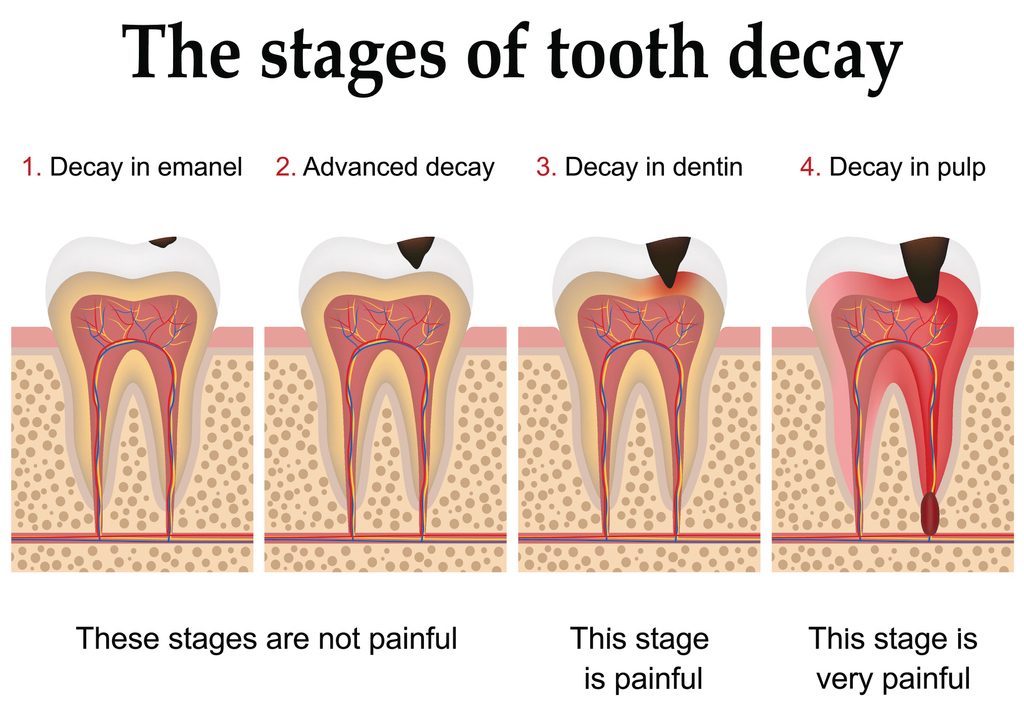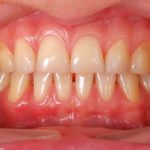
You’ve probably had tooth decay at some point in your life, but do you know what exactly it is? In this article, Dr. Pascal Terjanian talks about tooth decay its causes, stages,& treatment options.
Dental or tooth decay is an infectious disease that destroys hard dental tissue. It is caused by the action of acids produced by microorganisms (bacteria) making up the plaque.
The prevention of cavities is essential to maintain proper dental health.
Tooth anatomy
The teeth are made up of several layers that are intended to protect the dental pulp, or more commonly known as the dental nerve.
- The enamel is the hardest tissue in the body, but once it is lost, the body cannot regenerate damaged enamel again. It has no nerve endings, so it is insensitive to pain. It is important to keep it, otherwise, the dentin would be exposed.
- The dentin is located just below the enamel. It is a somewhat softer tissue and it has tubules that are responsible for transmitting impulses to the nerve. This means that once the enamel has been lost, it will be very sensitive to temperature (tooth sensitivity).
- Dental pulp or nerve. The dental pulp or nerve is the inner layer and is located just below the dentin, in the center of the tooth.
- The root is the part of the tooth that secures it into the jaw.
It is a soft and delicate tissue in which we can find nerve endings (they will give the tooth sensitivity and vitality), an artery (which will provide the necessary nutrients), and a vein (which will be responsible for eliminating certain residues).
Causes of tooth decay
Dental caries can appear due to various factors that coincide at a certain time. Bacteria coexist in the mouth that convert food, especially carbohydrates, into acids. The problem is when these foods remain between the teeth due to bad dental hygiene.
The acid present in this plaque damages the enamel of the tooth and creates small holes, through which it can reach more sensitive layers and end up destroying the tooth from the inside out.

Does a tooth with cavities hurt?
The problem is when the cavity becomes large and penetrates through the different layers of the tooth where the nerve endings are found or when part of the tooth fractures. If you let that cavity grow in size, you could start to have severe tooth pain, discomfort when chewing or biting, sensitivity, fractures, stains on the surface of the tooth and you could even get an infection.
How is a tooth with dental caries treated?
Depending on the phase & condition in which the caries are. If it is still a rather small cavity, the typical filling could be carried out. This consists of removing the area with cavities with the help of dental bur and filling it with composite.
If the affected part of the tooth decay is too large, it would be eliminated, the tooth restored, and an inlay placed, to avoid fracturing the tooth that could be in a very fragile & weak condition.
If the tooth decay reached the pulp, we would opt for endodontics. In the worst case, when you can no longer perform any of these treatments, we have to opt for the extraction of the tooth.
According to Dr. Pascal Terjanian, it is important to carry out good dental prevention, remembering to make regular visits to our trusted dentist. Good dental hygiene and correct eating habits are the best guarantees to prevent tooth decay.
 Follow Dr. Pascal Terjanian’s blog and social media to keep up with all the latest dental news and trends.
Follow Dr. Pascal Terjanian’s blog and social media to keep up with all the latest dental news and trends.


One thought on “What is a Tooth Decay?”
Comments are closed.